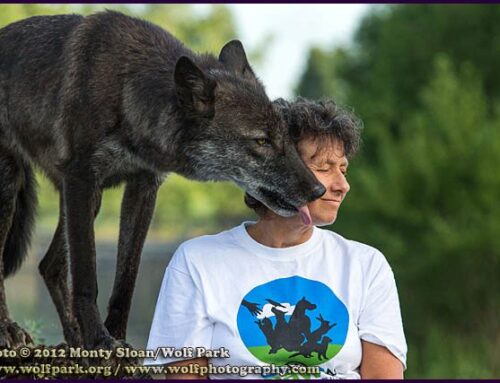 Despite thousands of years of coexistence humans are, for the most part, surprisingly inept at understanding their dogs’ language, a language which is largely physical. Dogs, for the most part, are whizzes at knowing when they need to wag and suck up, or turn tail and get the heck out of dodge when it comes to interacting with people. Problems arise when the cultures clash and what a person means is not what they say or what a person hears is not what their dog is shouting at them. Often the problems are minor and easily corrected. Others are not so minor and the dog usually suffers the brunt of the solution.
Despite thousands of years of coexistence humans are, for the most part, surprisingly inept at understanding their dogs’ language, a language which is largely physical. Dogs, for the most part, are whizzes at knowing when they need to wag and suck up, or turn tail and get the heck out of dodge when it comes to interacting with people. Problems arise when the cultures clash and what a person means is not what they say or what a person hears is not what their dog is shouting at them. Often the problems are minor and easily corrected. Others are not so minor and the dog usually suffers the brunt of the solution.
My nephew and his wife were visiting, I was hoping bells would ring and birds would sing when they met Tooie, my current foster dog. Both dog lovers, I knew Tooie would be in a good home were they to want him. Tooie is a sturdy, resilient pup of 5 months or so. During a walk my nephew called him and Tooie raced up next to him looking up expectantly. My nephew reached down and gave him nice head tussling in return. The next time he called Tooie, the dog did not race up to him. That head rub was not something the little dog wanted to repeat. Obvious to me as I watched it all play out, but perhaps not so obvious to a pet owner who thinks they are doing one thing, but in the dog’s eyes, it’s another.
I was briefly involved with a group of chihuahuas who were rescued from a breeder. A number of the dogs were shy and fearful. One, a black, long-haired cutie, who showed promise for picking up skills, was being fostered in a home with a mom and two young daughters. When questioned about how the dog was doing after her arrival in their home, the mom responded that she thought the dog was doing well. The next day the dog fled through an open window and has not been seen since.
What can look ‘ok’ to a person might be a dog who when given the chance would choose to jump off a bridge to escape from their suffering. Shut-down and scared can look a lot like calm and submissive if you get your dog reading information from bad TV programs. A dog may be able and willing to explore and sniff but still not be happy being where they are. When Sunny finally was able to get himself off the floor of the backseat of the car and stick his head out the window I was sure he was relishing the breeze until he stepped on the window control and jumped out. Had he been plotting an escape the whole time I thought he was enjoying himself?
A scared, shy dog who does not behave aggressively is often forced to do more than a dog who has long since learned to put his foot down (and bare his teeth) and insist to be left alone. This doesn’t mean they are prepared for more. Dogs’ body language can be subtle, but when you know what to look for, it’s clear and obvious. Learn to read your dog and when you do, believe what they are telling you.





